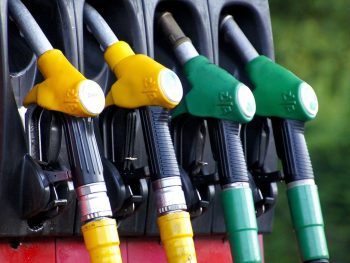Fuel retailers keeping pump prices artificially high, asserts RAC
Fuel retailers have been inflating their margins by not fully reflecting the recent enormous fall in wholesale prices at the pumps, new RAC data indicates.

The RAC says rising pump prices in the coming days will be further evidence of the biggest retailers taking advantage of motorists
Its analysis suggests retailers have been keeping pump prices artificially high, making more money out of drivers from every litre they sell and hitting diesel drivers the hardest.
The RAC explored prices over a nine-week period between mid-October and mid-December 2022 and found wholesale petrol costs tumbled by 23p per litre yet average pump prices took almost another month to fall by a total of just 18p, after peaking at 166.54p at the end of October.
The failure of the supermarkets to cut their prices “far enough or soon enough” was a major factor according to the RAC – they only reduced their prices by 20p over this period.
Diesel drivers were harder hit; wholesale prices plummeted by 32p a litre over eight weeks yet average pump prices came down only 20p a litre, after most recently peaking at 190.41p a litre at the end of October. Average supermarket diesel pump prices fell by the same amount.
And with the recent fall in pump prices now at an end, due to wholesale prices starting to slowly rise again, the fear now is that retailers will “waste no time in putting pump prices back up despite there being no justification for doing so”.
The RAC said its analysis provides further confirmation of so-called ‘rocket-and-feather’ pricing just weeks after the CMA published its own evidence of such practice.
The UK’s competitions regulator is already investigating UK fuel prices amid concerns over fuel pricing and a lack of transparency. Its initial findings, published in December 2022, revealed evidence that drivers were hit by rocket and feather pricing on road fuel last year and that retail fuel margins had risen ahead of general inflation year-on-year over the past five years. The competitions watchdog is due to publish a further update, including options for possible next steps, in the spring.
The new RAC data points to retailers making more money out of drivers from every litre they sell. It says the average retailer margin on petrol in 2022 was 13.5p a litre (supermarkets 10.8p), significantly higher than the 8.7p it was in 2021 (supermarkets 5.8p). The average diesel margin last year was 10.3p (supermarkets 7.5p), up from 8.8p in 2021 (supermarkets 6p). Prior to the pandemic, in 2019 average retailer margins were just 6.5p for petrol and 6.9p for diesel.
RAC fuel spokesman Simon Williams said: “This is a galling situation for drivers who are struggling more than ever, given the impacts of the wider cost-of-living crisis. The question now is whether retailers start to bump up their prices. This will depend on whether they decide to continue enjoying larger margins or let them return to more normal levels. Certainly, looking at current wholesale costs there is absolutely no justification for pump prices to rise. If pump prices do rise in the coming days, this will be further evidence of the biggest retailers taking advantage of motorists.”
It’s urged the Government to focus on ensuring retailers quickly pass on savings to drivers every time there is significant downward movement in the wholesale price of fuel – not only alleviating cost-of-living pressures on drivers but also because there is a clear correlation between high fuel prices and higher levels of inflation.
“As the Competition and Markets Authority is currently looking into retail fuel pricing and has even acknowledged the presence of ‘rocket and feather’ pricing, this is the prime time to take action for the benefit of consumers and businesses,” Williams stated.
RAC Fuel Pricing Analysis:
All figures in pence per litre
The RAC data shows a 23p wholesale petrol price drop only yielded an 18p cut at the pumps















